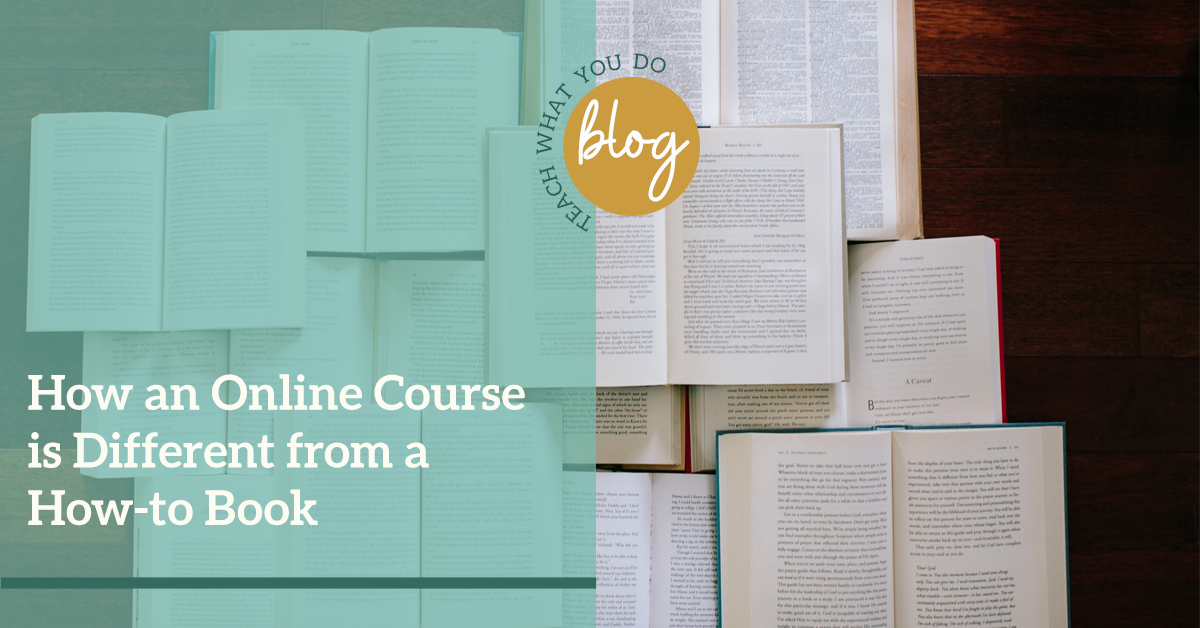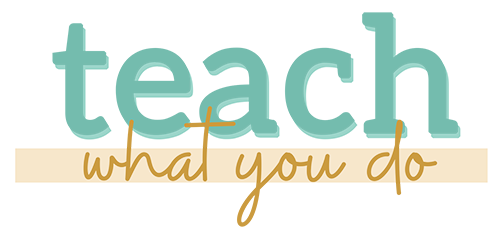
If you have written a non-fiction or how-to book, you can give it new life and extend its power and uses by turning it into an online course.
Here are 4 ways an online course can extend your how-to book content and impact.
#1. Add PACING to your how-to book when it's an online course.
A book is divided into chapters, but you really don't have control over how quickly someone goes through your book OR what they do between chapters.
With an online course, though, you'll divide the content up into lessons–and maybe even lessons within modules. And then you'll put each of these pieces into their own discrete spot in the course. You can then use your classroom platform to “drip” out access to these pieces at a pace and schedule you set up.
Online classrooms also let you include a progress checklist for tracking completion of these pieces.
#2. With an online course you can deliver in multiple FORMATS.
A book is written. It might be a hard-copy printed version, or it might be digital. And, if you're a big deal, your publisher might add an audio version.
When you create an online course, you can easily present each lesson (chapter) in multiple formats: video, audio, written.
Even if you've already written the book and like the print version, understand how easy it can be easy to turn that written work into a video.
One option is to speak straight to camera and record that. Another option is to make slideshow that's a mix of text and images for each chapter. You then record those slides and an audio of you reading the lessons, and combine them into a video. Once you've done this, it's easy to produce an audio and a transcript. Click here for 4 Ways to Create Video Lessons for Your Online Course.
#3. Add SUPPORT with an online course.
While a book is taken in passively, setting up an online course gives you the opportunity to add support which can get students faster and more remarkable results.
Two great ways to add support are through an online community and through group coaching calls.
The community can be set up with your classroom platform or you can use a private Facebook group.
The coaching calls could be one-to-one or with a group, and you can use a webmeeting tool like Zoom or GoToMeeting for the sessions.
#4. Include ROADMAPS with an online course.
There are plenty of supplemental pieces, which I refer to as ROADMAPS, that you can add make your online course course resource that moves students along their transformational path rather than something they take in passively all at once with a book.
With these guides and supports, you can help your students move from READING a how-to book to actually DOING.
Provide checklists, workbooks, and other guides that outline or detail the work that must be done. These can parallel the lectures or demos–or supplement and go into new territory. In an online course, these workbooks, worksheets, checklists, diagrams, and “cheat sheets” are usually written documents in pdf format. Offer your students the ability to print these worksheets and use them with pen and paper OR to use them “interactively.”
What do you think?
Have you got a how-to book you're ready to turn into an online course?
